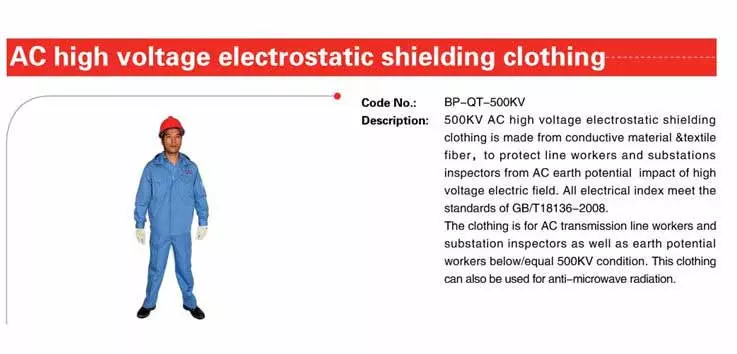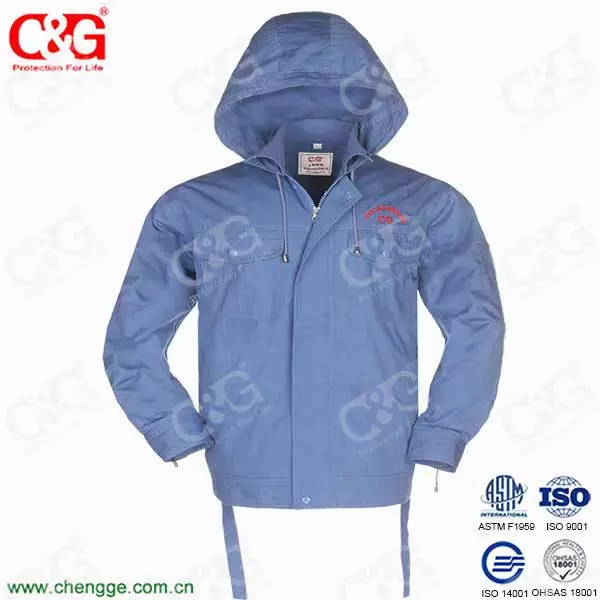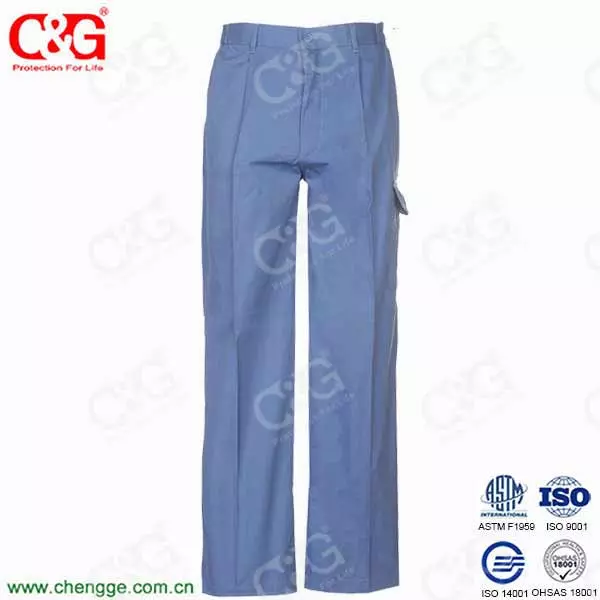Shanghai, China
+86-17317656853
inquiry@cgprotection.com




500kV AC High Voltage Electrostatic Protective Clothing



If you need timely service, please contact us through online chat on our website
or Email: inquiry@cgprotection.com
WhatsApp: +8617317656853





1, the scope
This Technical Specification specifies the technical requirements, test methods, inspection rules, logo, packaging, transportation and storage the 800KV wear masks shielding clothes, 800KV wearing a mask to shield the technical basis of the service design, production, use, testing.
2 Normative references
The terms of the following documents by this specification reference in this specification the terms. Who have not traveled dated reference documents, the latest version of this specification.
1) GB/T1335. 1 clothing and type of man
2) GB/T2662 cotton clothing
3) men and women GB/T2668 single service suite specifications
4) GB/T14286 live working tools equipment terminology (GB/T14286-2008, IEC60743: 2001, MOD)
5) GB/T16927. 1 high-voltage test techniques: General test requirements (GB/T16927. 1-1997 eqvIEC60060-1: 1989
6) the IEC60456 home washing machine performance measurement method
3, the performance requirements
1) when the 800KV DC ± 800KV and below the voltage rating of electrical equipment for live working masked shielding clothes worn by the workers shielding clothing.
2) The full set of clothing, including jackets, pants, gloves, socks, shoes and masks.
3) products useful life of not less than 1 year.
4) The successful product sampling inspection must be approved by the Electric Power Research Institute of Jiangsu Province, after passing.
4, the technical indicators
4. 1 The main technical parameters
4. 2 cloth technical requirements
4. 2. 1 shielding effectiveness
For the production of shielded clothing clothing, the shielding efficiency of not less than 60dB.
4. 2. 2 The resistance
For the production of shielded clothing clothing, the resistance shall not be greater than 800mΩ
4. 2. 3 fusing current
For the production of shielded clothing clothing, fusing current of not less than 5A.
4. 2. 4 resistance to spark
The cloth should have a certain ability to spark resistance, instead of burning in the high frequency spark discharge generated by the charging capacitor, only charring and no open flame spread.
4. 2. 5 flame
Cloth in contact with open flame, must be able to prevent the spread of open flame.
4. 2. 6 resistant to washing
3 To ensure that no significant decrease after repeated washing, electrical and flame resistance of cloth.
4. 2. 7 The resistance to wear
The cloth must be wear-resistant, clothes and durable.
4. 3 finished product requirements
4. 3. 1 T-shirt, pants
In order to ensure complete shielding clothing resistance less than the specified value, the resistance between any two endpoints of the shirt and pants are not allowed to be greater than 15Ω.
4. 3. 2, gloves, socks
The resistance of gloves and socks shall not be greater than 15Ω
4. 3. 3 shoes resistance
Resistance of the shoe shall not be greater than 500Ω
4. 3. 4 hats
Must ensure that the electrical connection between the hat and coat. Hat protective cover tongue and overhanging edges must ensure that the body exposed parts, such as facial does not produce discomfort, and should ensure that in the case of the maximum operating voltage, the human body exposed parts of the surface field strength shall not be greater than 240KV / m.
4. 4 complete shielding clothing
Resistance between the farthest endpoint of the entire shield clothing shall not be greater than 20Ω. In order to ensure that the entire shield clothing has a large through-flow capacity and a smaller resistance, should be placed in the appropriate parts of the jacket, pants, gloves, socks, hats, shunt cable. And parts of the sleeves and trousers should have two connectors.
5, the use of environmental conditions
1) Ambient temperature: -10 ~ 50 °C
2) Relative humidity: ≤ 85%
6, Appearance and structural requirements
Live working shield clothing fabric metal fiber and tussah silk blend with Monel wire and twist interwoven. Garments made good shielding performance, low resistance, the right amount of flow capacity, a certain degree of flame resistance and good wearability. The various components of the shielding clothing two removable connectors for reliable electrical connection should ensure that the connector in the course of their work shall not be torn off. The electrical specifications to meet the requirements of the GB/T6568-2008.
7, the product logo: 800KV wear masks shielding clothes shall have the following signs:
1) The name and address;
2) the product name, model;
3) The date of manufacture;
4) serial number;










© 2023 Shanghai C&G. All Rights Reserved.